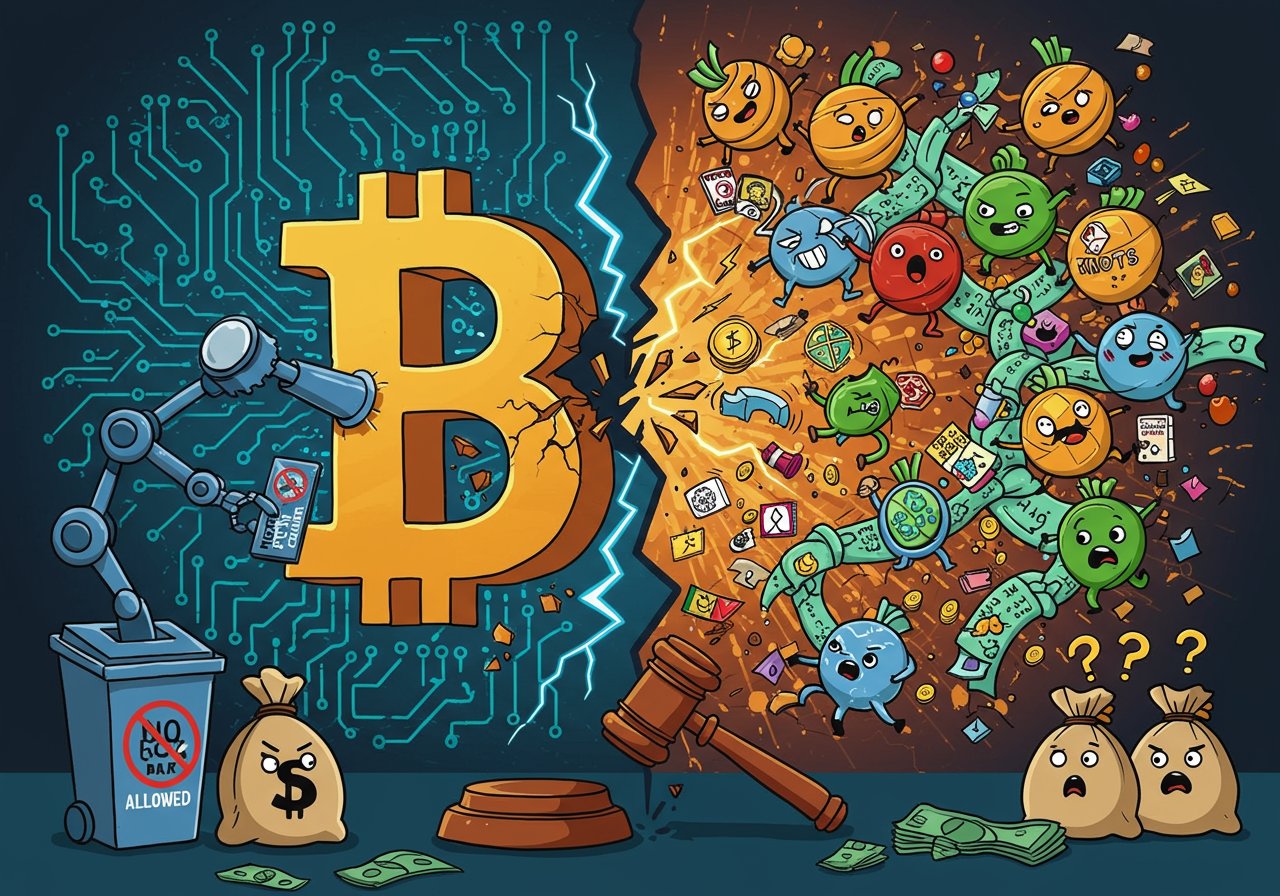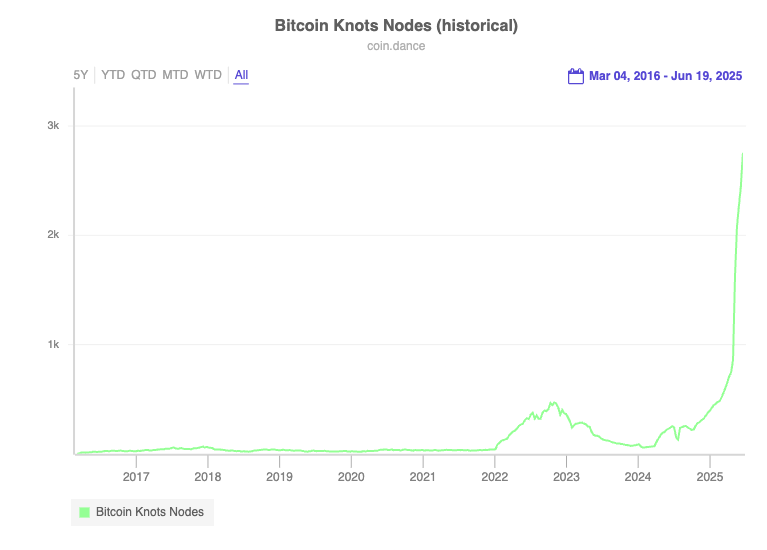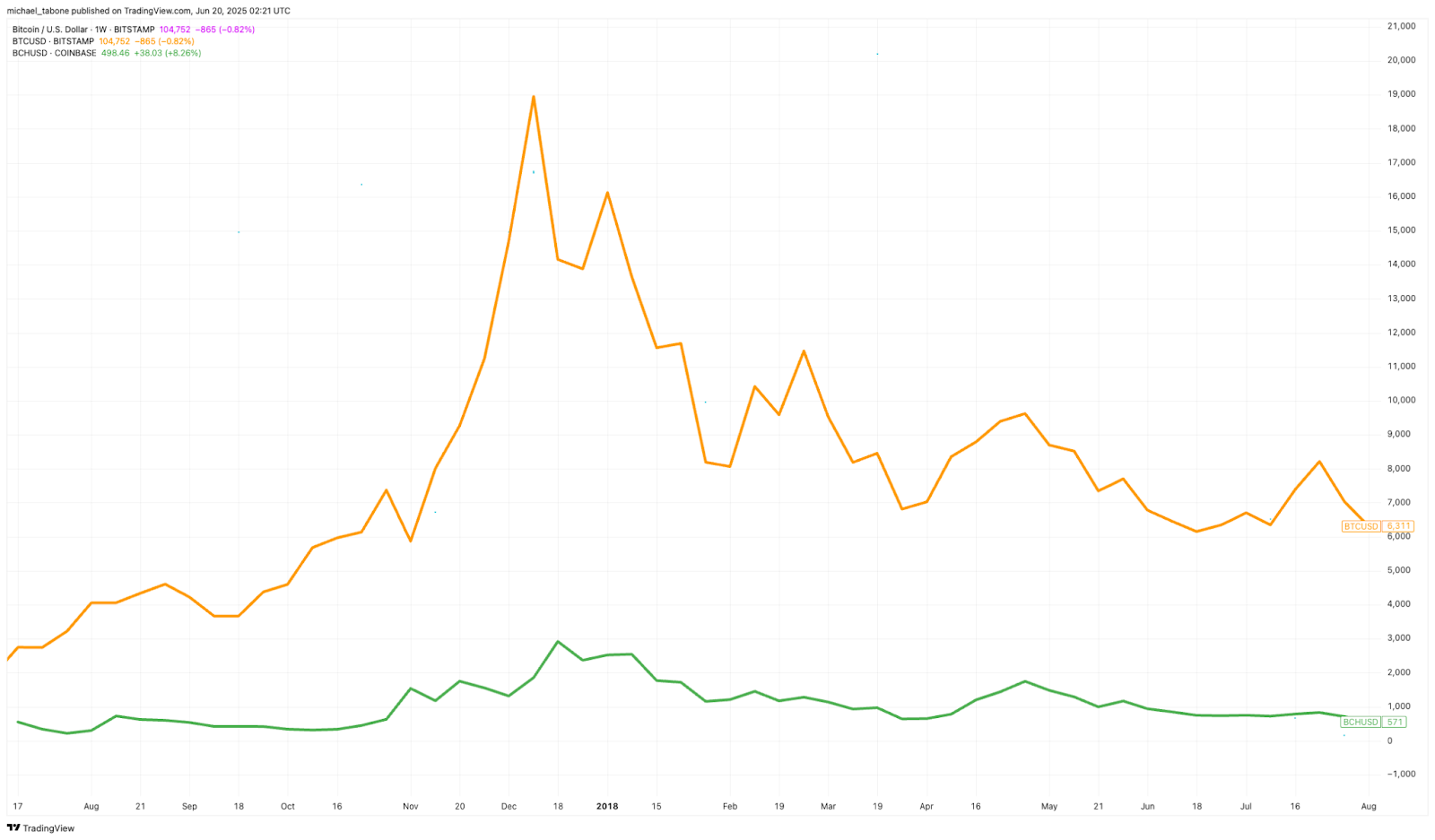
The Rise of Bitcoin Knots: A Challenge to Core
The Bitcoin network is undergoing a period of notable change, with the increasing popularity of the Bitcoin Knots client serving as a potential inflection point. Bitcoin Knots, initially developed by Luke Dashjr, presents an alternative to the widely-used Bitcoin Core client. Unlike Core, Bitcoin Knots emphasizes configurability and a policy-agnostic approach. Recent data reveals a significant surge in Knots node adoption, with growth exceeding 600% since the year’s start, a trend that began noticeably in May and has shown no signs of slowing. This rapid adoption has raised concerns and stirred debates within the Bitcoin community, primarily centered on the direction of the network’s future development.

A Clash of Ideologies: Core vs. Knots
The core of the current disagreement lies in differing views regarding the role of Core developers in shaping Bitcoin‘s future. Critics suggest that Core’s recent policy changes, particularly those targeting functionalities like OP_RETURN, represent a shift towards a more restrictive approach. Bitcoin Knots, on the other hand, allows users to configure their nodes without the built-in restrictions, which is appealing to those who champion Bitcoin’s core tenets of neutrality and censorship resistance. This divergence isn’t just a technical quibble; it’s an ideological battle. As Bitcoin Knots gains traction, it indicates a growing segment of the Bitcoin community questioning whether Core should unilaterally define the protocol’s boundaries.
The Shadow of 2017: Deja Vu for Bitcoin?
The rapid growth of Bitcoin Knots echoes the pre-2017 period, when disagreements over block size and miner power led to a hard fork. In the past, such forks have resulted in significant price volatility, with both positive and negative consequences. Some believe this is what is happening now as Core plans to implement code changes. These plans are being opposed by those supporting the use of Bitcoin Knots, which may result in the creation of a new Bitcoin fork or chain split in the future.

Potential Market Impact and Future Outlook
The future of Bitcoin could be significantly impacted by this situation. If Core’s upcoming changes cause blocks or transactions to be rejected by non-Core clients, a split is likely. Given the increasing adoption of Bitcoin Knots, this is not merely a symbolic protest but rather the emergence of a parallel consensus. This could potentially impact Bitcoin‘s price and future market stability. With Bitcoin ETFs and corporate adoption on the rise, any schism now could have a more significant impact compared to previous events. As more and more nodes transition, the network’s composition could undergo a profound transformation. Whether this results in a hard fork or a shift in influence, the rise of Bitcoin Knots represents a crucial juncture in Bitcoin‘s evolution.
The Path Ahead
- The situation warrants close monitoring as the policy landscape evolves.
- Stakeholders should familiarize themselves with the different client options.
- The community must engage in constructive dialogue to ensure a resilient future.
The evolution of Bitcoin is rarely a smooth journey. The rise of Bitcoin Knots underscores that point. The community should be ready.


